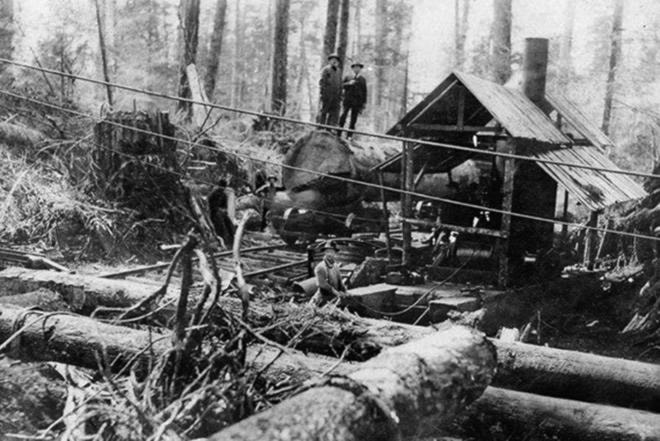Elida Peers | Contributed
I was invited to accompany a group of private forest land holders last week on an excursion from their conference at the Prestige Oceanfront Resort to the historic log sort area at Jordan River.
We had a great field trip, with me enjoying expounding on our district’s early forest history, explaining that the hotel site was in view of the very beginnings of the industrial forest history of B.C. – the steam-powered sawmill of the John Muir family.
When the bus tour reached Jordan River, we met Loren Perraton, of Canadian Overseas Log and Lumber Ltd., where the group was outfitted with hard hats and treated to an interesting walking tour of the log sort activities.
It brought me back to the early days of B.C.’s forest industry, when in 1909 seven miles of logging railway carried the forest harvest down to tidewater at the river mouth. The logs were boomed and then towed by tugboat east towards Victoria’s sawmilling markets.
The photo shows a steam donkey engine yarder and cables alongside the logging railway, which ran down the hill where one approaches Jordan River by road today.
It was Michigan Pacific that first entered the industry at the river, and its efforts were soon followed by Canadian Puget Sound Lumber & Timber Company. CPS, as it was called, employed hundreds, and had its own bunkhouses and cookhouse.
Vehicle traffic was not possible until after 1912, and most traffic was by boat to Victoria. In the 1920s Harry Kirby operated a bus service (or crummy) which could carry loggers into Victoria for the weekend and some R&R, before the next work week began.
CPS became a subsidiary of Alaska Pine, and in time it was Western Forest Products that harvested in the area. Steel spars and automated equipment took the place of high riggers climbing to make spar trees, and machines like steam-powered yarders were no longer needed.
What with V.I. Power Company, a subsidiary of B.C. Electric, establishing a powerhouse at Jordan River in 1911, under the guidance of superintendent D. I. Walker, building the Diversion Dam and its miles of flume, adding their hundreds of men on the construction workforce, Jordan River was a bustling place in the first half of the 20th century.
Last week, it was great to see the enterprise established in 2011, Pacheedaht Anderson Timber Holdings, popularly called Queesto (for the renowned hereditary Pacheedaht chief), working in such a friendly, community-based style in the old log-sort that has seen so many changes over a century.
Today’s hard hats, safety vests and WCB regulations would have been a shock to crews working onsite 100 years ago.
•••
Elida Peers is the historian of the Sooke Region Museum.
